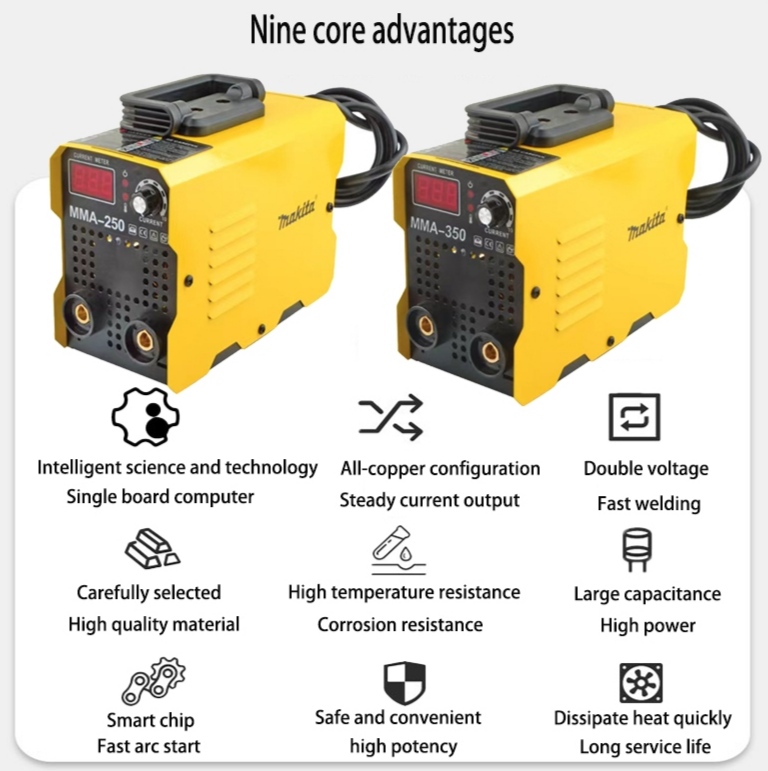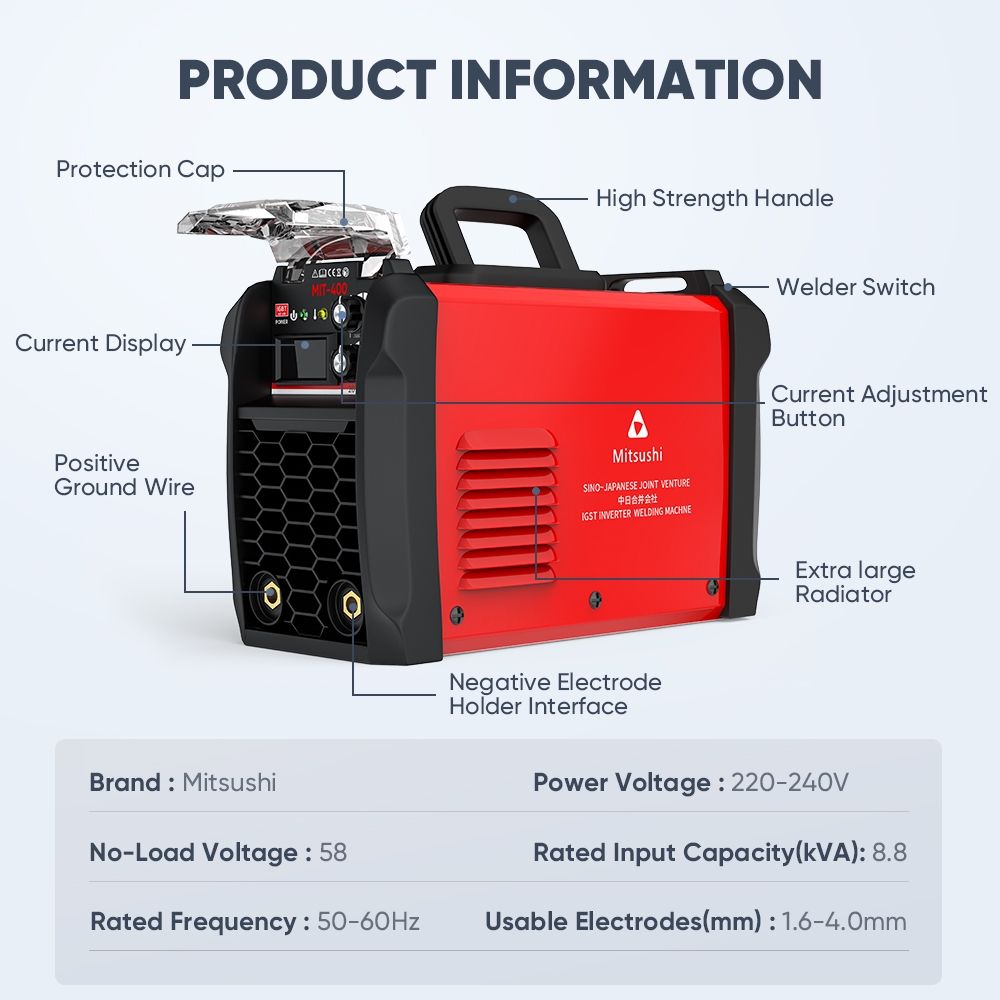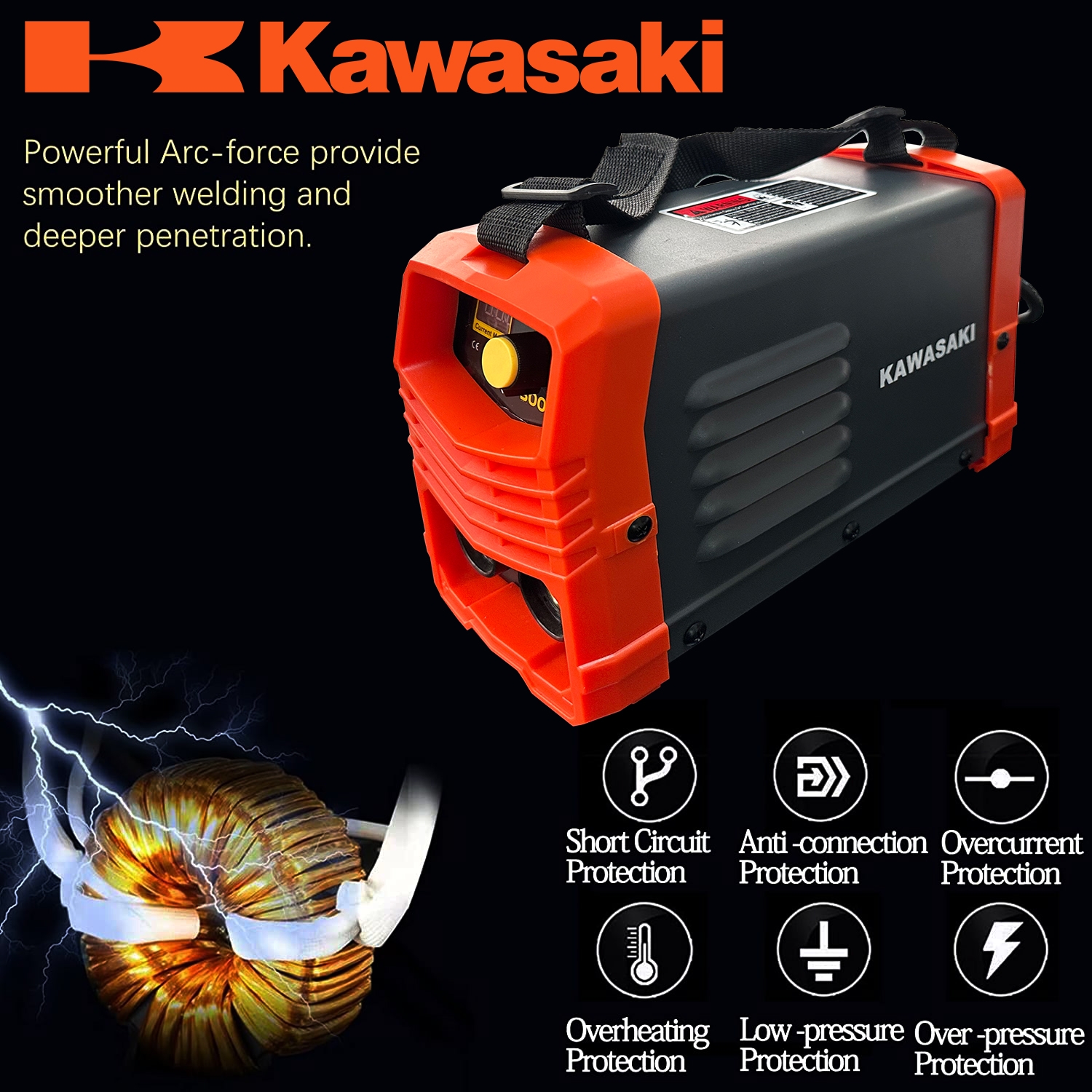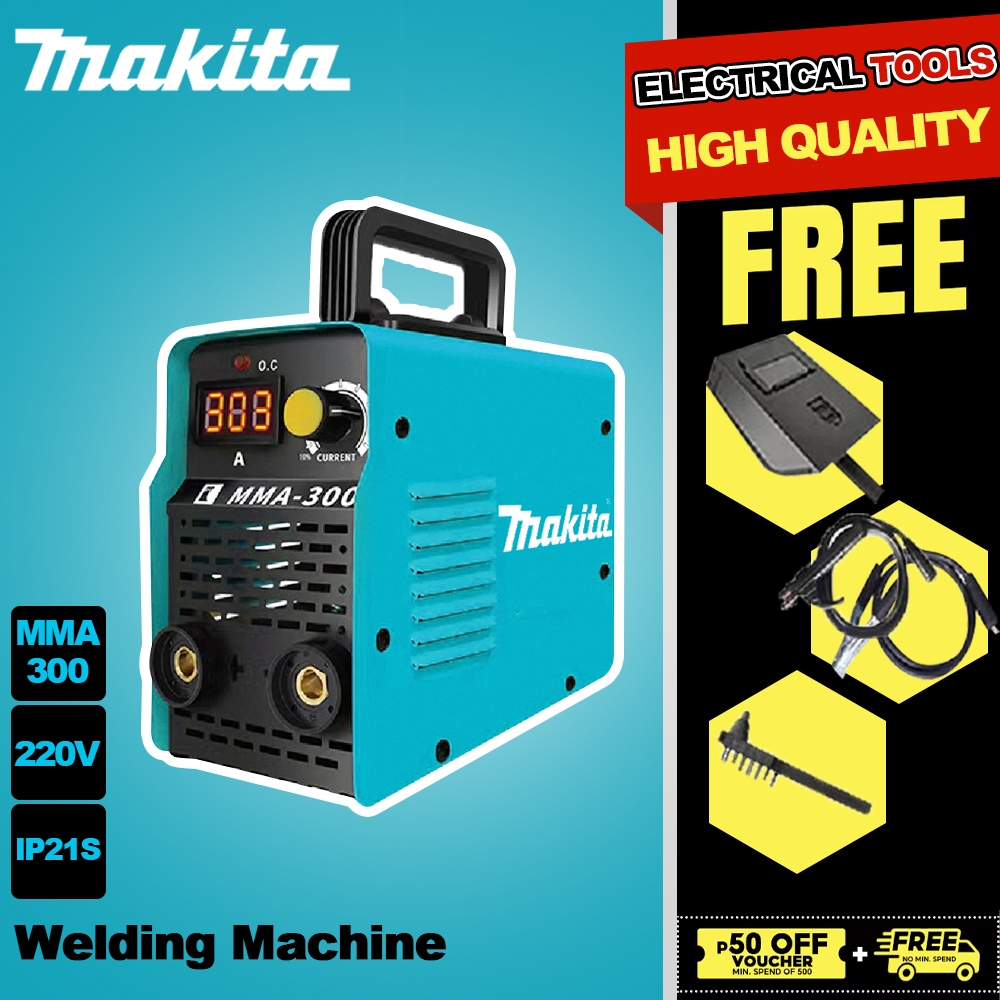PORTABLE WELDING MACHINES
TYPES OF WELDING MACHINES
There are various types of welding machines used for joining metals and other materials. Each type of welding machine is designed for specific applications and processes. Here are some common types of welding machines:
- Arc Welding Machines:
- Shielded Metal Arc Welding (SMAW)
- Shielded Metal Arc Welding (SMAW), commonly known as “stick welding,” is a manual arc welding process that involves joining metals using an electric arc established between a flux-coated consumable electrode and the workpiece. SMAW is one of the oldest and most versatile welding processes, widely used in various industries, including construction, manufacturing, shipbuilding, and maintenance and repair.
- Gas Metal Arc Welding (GMAW)
- Gas Metal Arc Welding (GMAW), often referred to as Metal Inert Gas (MIG) or Metal Active Gas (MAG) welding, is a semi-automatic or automatic welding process that utilizes a continuous solid wire electrode and a shielding gas to join metals. GMAW is widely used in a variety of industries, including automotive manufacturing, construction, aerospace, and general fabrication. Here’s
- Gas Tungsten Arc Welding (GTAW): Also known as TIG (Tungsten Inert Gas) welding, it uses a non-consumable tungsten electrode and a shielding gas.
- Resistance Welding Machines:
- Spot Welding: This process uses electrodes to apply pressure and electrical resistance to create a weld in the form of a spot.
- Projection Welding: Similar to spot welding but with a raised projection on one of the workpieces.
- Seam Welding: Used to create a continuous, leak-tight weld along the length of overlapping sheets.
- Gas Welding Machines:
- Oxy-Acetylene Welding: This method uses a mixture of oxygen and acetylene gases to create a high-temperature flame for welding and cutting.
- Submerged Arc Welding (SAW): This process involves a continuous wire electrode and a granular flux that is submerged beneath a layer of powdered flux to shield the arc.
- Electron Beam Welding (EBW): Uses a focused beam of high-velocity electrons to join materials, often in a vacuum.
- Laser Welding Machines: Utilizes a highly focused laser beam to melt and join materials, especially for precision and small-scale applications.
- Plasma Arc Welding (PAW): Similar to TIG welding, but the electrode is located within the torch and a high-velocity jet of ionized gas (plasma) is used to create the arc.
- Friction Welding Machines:
- Rotary Friction Welding: Involves rotating one component against another under pressure to create a solid-state weld.
- Linear Friction Welding: Joins two materials through linear motion and frictional heat.
- Ultrasonic Welding Machines: Utilizes high-frequency ultrasonic vibrations to create a weld between thermoplastic materials.
- Induction Welding Machines: Uses electromagnetic induction to heat and join conductive materials, especially in applications like brazing and soldering.
- Explosive Welding Machines: Welds two dissimilar metals by using explosive charges to force them together.
- Cold Welding Machines: Used for joining non-ferrous metals at or near room temperature by applying high pressure.
Each type of welding machine has its own set of advantages and limitations, making them suitable for specific welding applications in various industries. The choice of welding machine depends on factors such as the materials to be joined, the welding process, the required precision, and the working environment.






